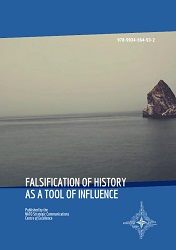Case Study: Poland. Soviet Invasion of Poland on 17 September 1939
Case Study: Poland. Soviet Invasion of Poland on 17 September 1939
Author(s): Ieva Pałasz, Małgorzata Zawadzka
Subject(s): Government/Political systems, International relations/trade, Fascism, Nazism and WW II, Politics of History/Memory
Published by: NATO Strategic Communications Centre of Excellence
Keywords: Poland; Russia; Soviet invasion of Poland; falsification of history; foreign influence; politics of history; manipulation;
Summary/Abstract: For the Russian Federation, the most important current issue in the scope of history is the strengthening of belief in the great victory of the USSR over Nazism and, as Jolanta Darczewska writes, a rehabilitation of the special services, as well as a change in the assessment of the deeds of Stalin. The issue of cooperation between the USSR and Hitler before 1941, which, in Russian historiography, is the beginning of the Great Patriotic War, has become quite a problematic question in this context. In this regard, we can observe a number of activities in Russia, the purpose of which is to relativise such events as the secret protocols to the Molotov-Ribbentrop Pact or the Katyń Massacre (the murder of Polish officers, non-commissioned officers and other individuals in 1940); ethnic genocide as a part of the ‘Polish Operation of the People’s Commissariat for Internal Affairs’, i.e. NKVD (1937-38); the joint Soviet-German parade in Brest; and the NKVD–Gestapo methodological conferences (1939-1940). The same applies to 17 September 1939 – i.e. the aggression of the USSR against Poland. This text will be devoted to the methods of falsifying this event by the Russian Federation.
Book: Falsification of History as a Tool of Influence
- Page Range: 56-72
- Page Count: 19
- Publication Year: 2020
- Language: English
- Content File-PDF

